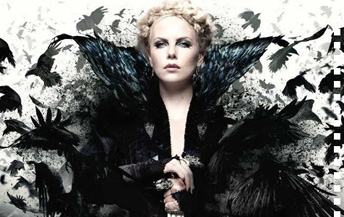Things I Learned From Movie X: Snow White Edition
By Edwin Davies
June 11, 2012
The summer is well and truly upon us now, and as such we have entered the most spectacularly amazing/depressing (delete according to your respective level of cynicism regarding modern movie-making) time of the year; blockbuster season! As in every year, the season comes with its own delights/horrors to be enjoyed/endured, and this year has been no difference. Heck, we’ve even been treated/assaulted with the opportunity to see not one, but two new takes on Snow White. Aren’t we all so very lucky/doomed?
To reflect this rare occasion, I have decided to break with the traditional Things I Learned From Movie X format of looking at one movie in order to compare and contrast the two Snow Whites, and see what they have to offer.
One part of the phrase “Evil Queen” is more important than the other
When the two competing Snow White adaptations were announced, I assumed pretty early on that the key factor in determining their commercial success, as well as whether or not they would prove to be any good, would come down to how they treated the Evil Queen who sets the whole chain of events into motion by being a murderous, man-eating, Fatal Attraction-ing psycho bitch with a hankering for human hearts. (They’re a great source of protein.)
In pretty much every telling of Snow White, the Queen has been the most interesting character since she’s the one whose actions drive the story - unless you count “looking real purdy” as an action on Snow White’s part - and because she’s just so malevolent. If you consider Walt Disney’s 1938 version, which is undoubtedly the most famous and successful, it’s hard to consider Snow White as a character at all since she’s two-dimensional even by cartoon standards. Her “arc” over the course of the film consists of starting out looking pretty, then getting too pretty, necessitating that the Queen take action and flat-out murder that bitch’s pretty ass, then running away and falling under the protection of the dwarfs, then having a little sleep, then waking up to find out that the Queen is dead and everything is hunky dory. Though both Mirror Mirror and Snow White and The Huntsman try to redress that balance by making their respective Snow Whites into warriors who lead the fight against their respective Queens, therefore giving the character a more feminist slant, both are dependent on having a strong, villainous Queen to battle against in order to give their story meaning. In short, the Evil Queen should be, well, evil. Suffice it to say, one of the films has a Queen who is cruel, devastatingly beautiful and, almost as a bonus, has something resembling motivation for that cruel beauty, and the other has Julia Roberts.
The problem with Roberts’ take on the character in Mirror Mirror is not so much that she’s bad – though let’s not beat around the bush here: she is very bad in the role – but that her “comedic” turn, whilst committing the cardinal sin of not being funny, actually works against the adventurous spirit of the rest of the film. So much of Mirror Mirror’s running time is spent giving Roberts limp one-liners to spew out that it forgets to make her into a credible threat, so by the time that the final act comes around, it’s almost as if everyone involved suddenly woke up one day and said, “Oh yeah, she’s meant to be trying to brutally murder this 18-year-old girl. Maybe we should, I don’t know, give her a CGI dragon-wolf to command?” By encouraging the audience to laugh at the Queen’s attempts to woo a young prince (Armie Hammer, whose name sounds so much like a strained pun that I refuse to believe that he is a real person rather than something extracted from the mind of Thomas Pynchon) it takes away any power the character could have as a real threat.
Continued:
1
2




